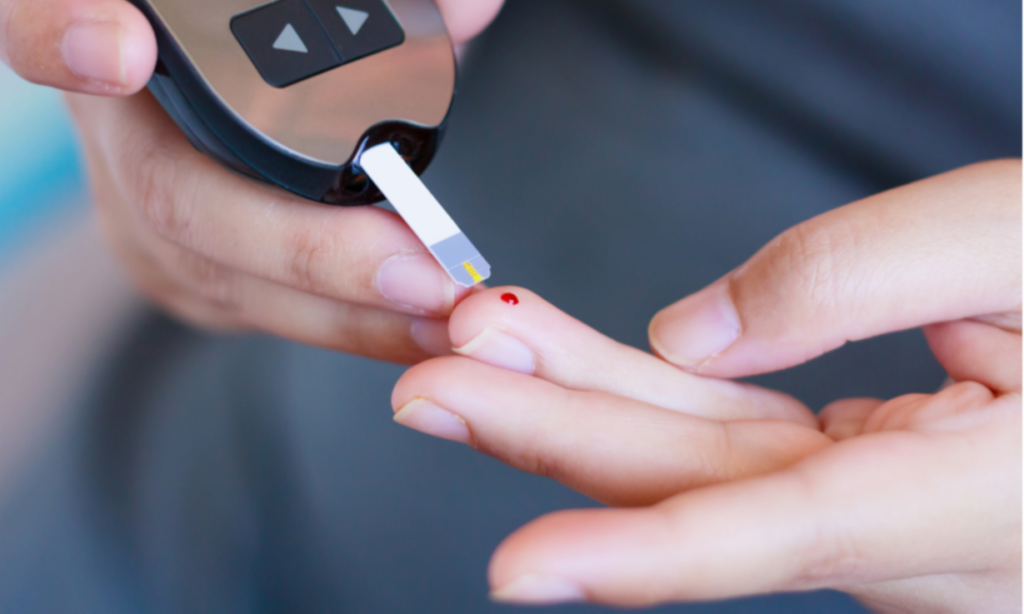
Reach Your True Running Potential:
By Using Your Unique Scientific Data As an endurance athlete who wants to maximise time training effectively to reach your true potential, knowing your blood lactate levels is extremely beneficial and is the main marker used by World Class athletes and Coaches as an important determinant of your current fitness level and guides your future training plan.
Lactate is the by-product of glucose utilisation by muscle cells. Skeletal muscle glucose uptake increases dramatically in response to exercise and a higher amount of lactate is produced which is many times higher than that at rest.
Your lactate threshold essentially defines the upper limit of your sustainable efforts in training and competition.
The accumulation of blood lactate as your speed and work rate increases will hinder your muscles ability to contract, and you will be forced to slow down or stop. The more work you can do before reaching lactate threshold, the better. If the pace you can hold at your lactate threshold is higher than the pace your competitor can hold at his or her lactate threshold, you go faster, reach the finish first, and win.
To guide and monitor your training by. Extremely useful performance indicator to identify current achievable times over various distances.
Lactate threshold is one of the most effective performance markers used by many elite athletes and World Class coaches including the “Breaking2“ Project!

As soon as your test is booked, you will be emailed a comprehensive form to complete. It is really important that you provide as much accurate detail as possible and return 48 hours before your test. David will spend a considerable amount of time planning your test. It is vital that he is able to obtain LT1 and LT2 levels within 12 to 20 minutes of running (after a warm up). Starting the treadmill speed too fast or too slow will affect this. David will also want to get an understanding of your running history, goals and lifestyle so that he can provide both an achievable and holistic plan for you.

Before starting on the treadmill you will be taken through a full range of tests getting markers of body composition, lung function, iron levels and mobility. These markers help to ensure that you are healthy enough to commence a training program and as further performance markers to review in subsequent tests.

Time for the actual test! You will be given time to complete a really easy warm up on the treadmill. David will then start moving you through 3 minutes of running increments at increasing speeds interspersed with short breaks to take a finger prick blood test until he obtains the data he requires or you voluntarily terminate the test.

Your personal test data is summarised into a report and discussed in full in your session.
We will talk through:

Once you have finished your appointment, it is time to begin your plan and start to progress towards your goals. Your report provides all you need to get started, including answering many of your initial questions that might arise once you start training.

After starting your plan and making some initial progress, it is natural that you will have questions to ask and your program may need tweaking which is why David encourages you to book a video/phone call.
The better the competitive and training level of an endurance athlete is, the less blood lactate accumulation is observed at a given speed.
At rest and under steady-state exercise conditions, there is a balance between blood lactate production and blood lactate removal.
Blood lactate can be measured by running on a treadmill at increasing speeds interspersed with taking blood samples via a pin prick to measure blood lactate and find your LACTATE THRESHOLD (LT1) and Maximal Steady State (LT2).
Finding these changes in blood lactate related to a given speed with simultaneous monitoring of your heart rate means that you can very accurately train to improve your performance. The aim is to work in specific heart rate zones to improve the speed at which you can run before there is a marked change in your blood lactate levels.
Reference:
Jones, Andrew & Kirby, Brett & Clark, Ida & Rice, Hannah & Fulkerson, Elizabeth & Wylie, Lee & Wilkerson, Daryl & Vanhatalo, Anni & Wilkins, Brad. (2020). Physiological demands of running at 2-hour marathon race pace. Journal of Applied Physiology. 130. 10.1152/ japplphysiol.00647.2020.
David Tune is our Running Coach who conducts the test, you can read more about David here.
Please don’t worry. If this happens then please get in touch with us as soon as possible. We can then rearrange your test for a later date. We do require 48 hours notice for a cancellation in order to receive a full refund.
We take a pin prick sample of blood from your finger after each increment on the treadmill.
This is relatively painless!
To a certain extent this is up to you! Completion of each increment is voluntary and the test will be stopped by yourself or David when you are unable to run any faster.
The most important data we need to find is to run you up to 5k pace, so that we can provide accurate heart rate training zones.
We strongly recommend that you speak to your GP before you have a test regarding your health concerns.
You can also give David a call to discuss these first before your test too.
We recommend that you don’t have anything other than a light snack within two hours of your test.
Please do not drink coffee within two hours of your test as this can affect your data.
You need to be in a rested state in order to obtain the correct data. We therefore would recommend having a couple of easy days before your test.
We would recommend you leave at least a week after a 10K, two weeks after a half marathon and a month after a marathon before completing a test.
This very rarely occurs but if the test has to be stopped due to illness or injury then we will rebook the test free of charge.
See also “How hard do I have to run?”
It depends! We would recommend at least one test per year to monitor your training, tweak your heart rate zones and ensure that you are working towards your goals.
For marathons and specific race targets we would recommend a test before every 20 week block of training. Testing can be advantageous with a frequency of every 12 weeks to be very closely monitored and truly reach your potential.
How can we help you?